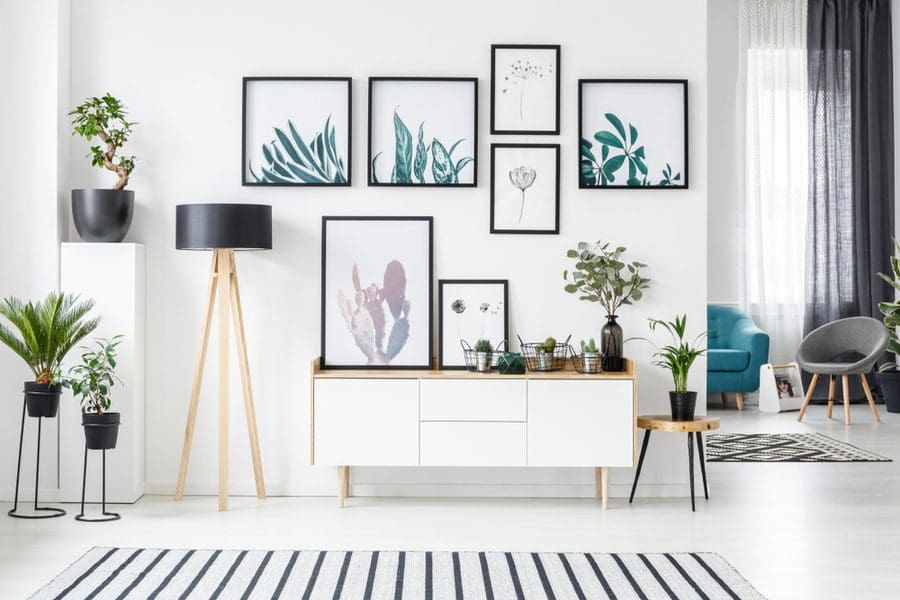Similar to pulling together an outfit with a completer piece, applying artwork is the best way to add a splash of color and elevate your living (or work) space. More than a fresh coat of paint and less than a simple reno, when it comes to styling your place, selecting, purchasing and displaying art is the perfect sweet spot. Because moving in and settling down can be a mission, it’s easy to think function first, frame later. However, many finishing touches tend to fall by the wayside as time ticks by.
First thing’s first – it’s important to determine your style.
If you’re new to the art world, take a minute to explore your options and figure out what you like in terms of style, medium and artist. From paint to pencil, photograph to sculpture, the possibilities are endless. Finding it difficult to settle on a medium? Take a deep dive into mixed media. To simply scratch the surface, use social media as an introduction to the world and a direct way to learn the type(s) of art you find visually appealing. Thank you in advance, Pinterest and Instagram! While you’re in the process of scrolling and selecting, keep in mind the interior design, décor style and color palette of your home. It’s all about complementing (or contrasting).
Next, set a budget.
Similar to fashion, the cost of art varies significantly. Whether you’re into a DIY sesh or a gallery visit, choose your maximum spend for material(s) or work(s) beforehand. If you’re looking to flex your creativity, tune into a tutorial, attend a workshop or get the gang together for a night of eats & arts. Short on time? Collect a number of your favorite photos, create a frame for each photo using a different color and/or texture and present the snaps gallery-style on a wall in your living space. To note, other DIY ideas for wall art include coloring, collaging and re-purposing fabrics and frames. If you’re looking for something more on point, make a list of amateur or professional artists based on your most important factors. To save money, opt for a print vs. an original or consider buying student work at the tertiary level. In addition to gallery news, stay up-to-date with local art pop-ups, shows, markets and festivals.
Beyond window shopping and gallery browsing, those with a specific shape, size or space in mind and a vision to fulfill can reach out to an artist to commission a piece of artwork. If it’s your first time doing so, cover the basics by building a relationship with the artist, observing their profile and maintaining communication. To ensure a successful creative collaboration and commission, the opportunity to offer feedback is key. Whether it’s a statement piece or a secondary work, aim to walk away with a special personalized product that not only represents you, but also serves as a focal point. Because art is often subject to interpretation, it should initiate conversation and encourage discussion.






